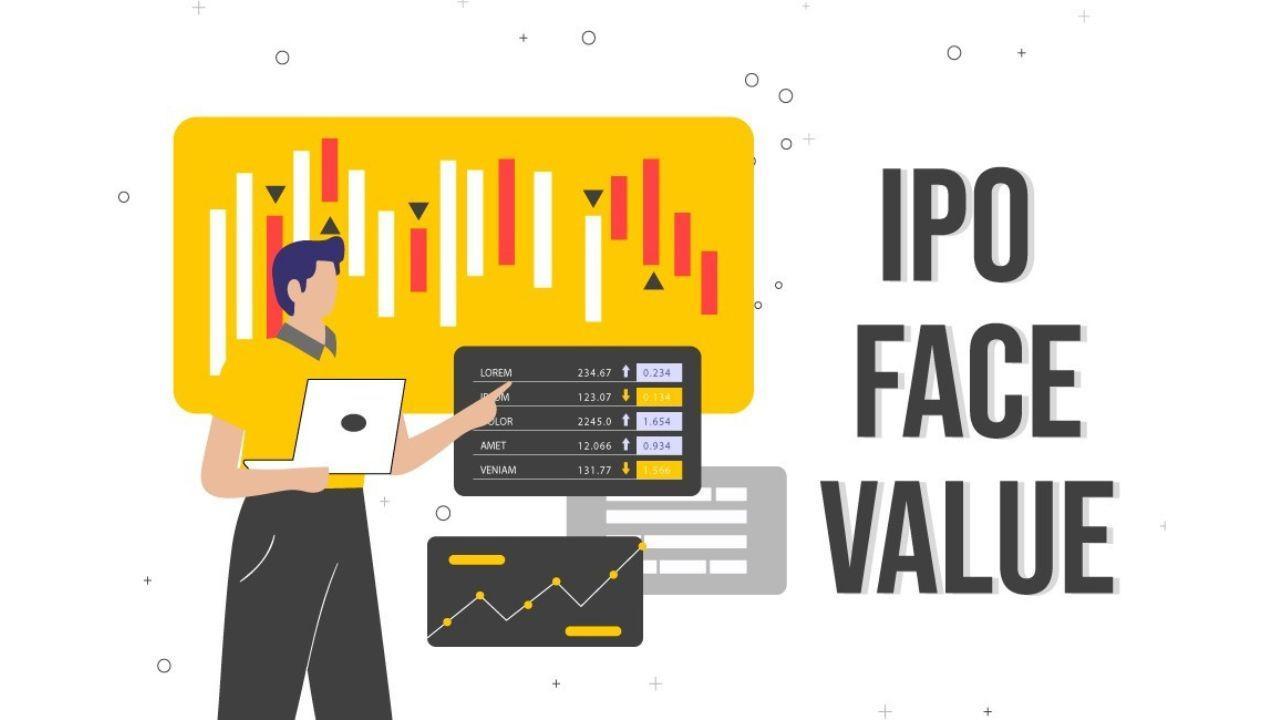IPO Face Value refers to the company's pre-market value. The face value is usually determined by an investment banker's company analysis and prospects.

The upcoming IPO price per share is determined by this calculation (Initial Public Offering). A price can be set for each share offered in the stock market once the face value has been established.
ADVERTISEMENT
1/- (one rupee) per equity share is printed on every share certificate as the face value or par value. However, in practice, share prices tend to be higher than their nominal/face value. Face value can be defined as "the original price at which companies issue new shares to investors" in an initial public offering (IPO).
What Is the IPO's Face Value?
This refers to how much investors pay when they buy shares in a new upcoming IPO, called the "face value" (IPO).
For example, let's say an investor is purchasing 100 shares of ABC Limited's initial public offering (IPO) at a price of Rs.10. In other words, he will be paid Rs.1000 when the company begins trading on the stock exchange. It's possible that once he's listed on the stock exchange, his shares could sell for as little as Rs.11 each or even as high as Rs.12. However, if the face value of each share is lower than its actual trading, the price, his investment will pay off.
As stated on the certificate, "Face Value" refers to a security's nominal or par value. It is also referred to as a contract's principal value and redemption value. The nominal price is the same as the face value.
Several factors go into the face value
A variety of factors determines the face value of a stock. It's given out randomly by companies: one rupee, two rupees, five rupees, or ten rupees.
There's a big difference between the stock's face value and the stock's issue price. A company's potential subscribers are charged an issue price in addition to the face value. Simply put, the issue price is the sum of the face value and any premiums that may have been paid.
For sure, there is no such thing as a "random premium." Sales, profit, and volume growth all play a role in determining the company's success. Some companies offer an issue price close to their face value, indicating that they only ask for a small premium from their investors in exchange for their shares of stock.
For example, a company called ABC recently went public. It offers 10,000 shares, each with a nominal value of Rs. 10 (approximately $1). It is also worth Rs. 150 to buy the new stock. A premium of Rs. 140 is being asked of potential subscribers by ABC, which is above and beyond its face value of Rs. 10.
Face value is of what use?
When a company announces a stock split, they use the stock's face value. The purpose of a stock split is to increase the company's liquidity by dividing its existing shares into multiple new shares that can be bought and sold quickly and with little impact on the stock price or to lower the share price. This means that the stock's face value is divided by the number of shares.
Due to market and company conditions, the companies use face value because it has an unaffected fixed value.
The face value of the stock is also used by companies when calculating dividends. The company pays its shareholders a portion of its yearly profit as a dividend.
Face value, market value, and book value all refer to the same thing, but how do they differ?
The "face value" of an Initial Public Offering is the predetermined value assigned to each company share at the time of the offering. Although market conditions may fluctuate, the face value does not.
As a result, a company's market value is the current share price on the stock market. Changing macroeconomic conditions, global events, and government policies affect this, so it's always subject to change.
It is the company's net worth as stated in the company's books. According to theory, the value of a company's assets and liabilities can be calculated by calculating what investors will receive if the company is liquidated, i.e., after all of its assets have been sold.
Conclusion
An investor who only cares about making money isn't concerned about a company's face value. However, for a retail investor, the concept of face value is still important. Learning about face values can help you determine how successful your investment in a company will be in simple terms. You can install any share market app for your help.
 Subscribe today by clicking the link and stay updated with the latest news!" Click here!
Subscribe today by clicking the link and stay updated with the latest news!" Click here!







